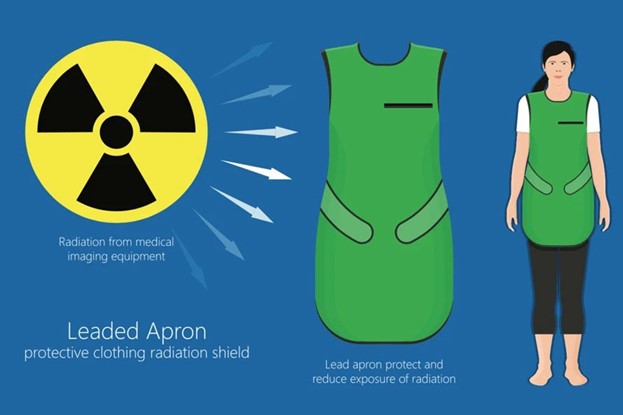A nurse on an oncology unit is caring for a client who is receiving internal radiation therapy.
Which of the following actions should the nurse take?
Allow visitors to hold the client's hand.
Place the dosimeter film badge on the client's door.
Wear a lead apron when providing client care.
Leave the door to the client's room open.
The Correct Answer is C

Wearing a lead apron can help protect the nurse from radiation exposure while providing care to a client receiving internal radiation therapy.
Choice A is incorrect because visitors may need to limit their contact with the client and follow specific safety precautions.
Choice B is incorrect because a dosimeter film badge is worn by the nurse to measure radiation exposure, not placed on the client’s door.
Choice D is incorrect because the door to the client’s room may need to be kept closed as a safety precaution 2.
Nursing Test Bank
Naxlex Comprehensive Predictor Exams
Related Questions
Correct Answer is B
Explanation
The glycosylated hemoglobin level (also known as HbA1c or A1C) is a laboratory test that reflects average levels of blood glucose over the previous two to three months.
It is the most widely used test to monitor chronic glycemic management.
Choice A is not the answer because fasting blood glucose level reflects only short-term glycemic control.
Choice C is not the answer because oral glucose tolerance test results reflect only short-term glycemic control.
Choice D is not the answer because postprandial blood glucose level reflects only short-term glycemic control.
Correct Answer is C
Explanation
A saw-tooth pattern with an atrial rate of 250 to 400/min is a characteristic finding on a cardiac rhythm strip of a client who has atrial flutter.
Choice A is incorrect because progressively longer PR durations are characteristic of a Mobitz type I second-degree AV block, not atrial flutter.
Choice B is incorrect because undetectable P waves are characteristic of atrial fibrillation, not atrial flutter.
Choice D is incorrect because absent PR intervals with a ventricular rate of 40 to 60/min are characteristic of third-degree AV block, not atrial flutter.
Whether you are a student looking to ace your exams or a practicing nurse seeking to enhance your expertise , our nursing education contents will empower you with the confidence and competence to make a difference in the lives of patients and become a respected leader in the healthcare field.
Visit Naxlex, invest in your future and unlock endless possibilities with our unparalleled nursing education contents today
Report Wrong Answer on the Current Question
Do you disagree with the answer? If yes, what is your expected answer? Explain.
Kindly be descriptive with the issue you are facing.
